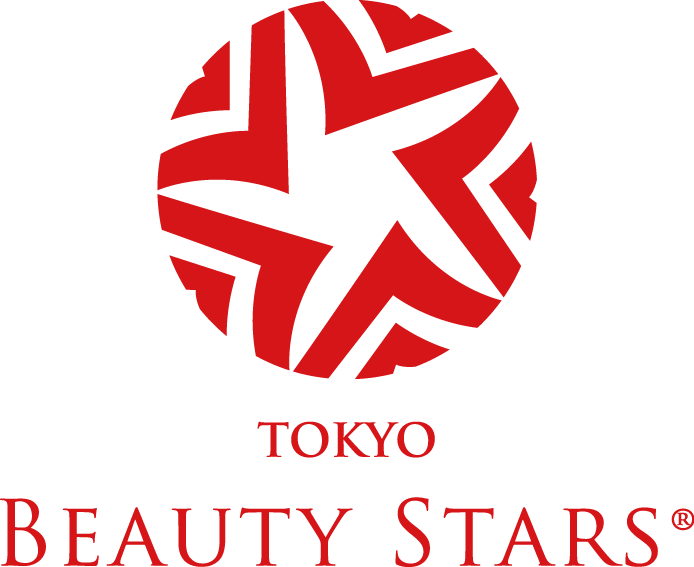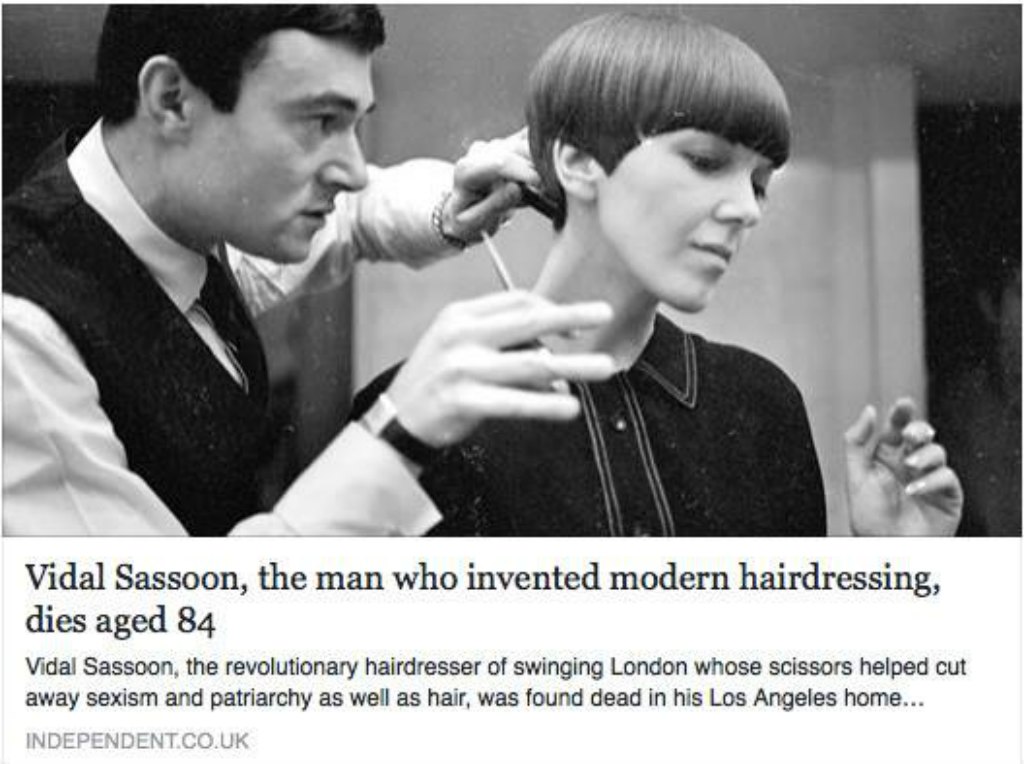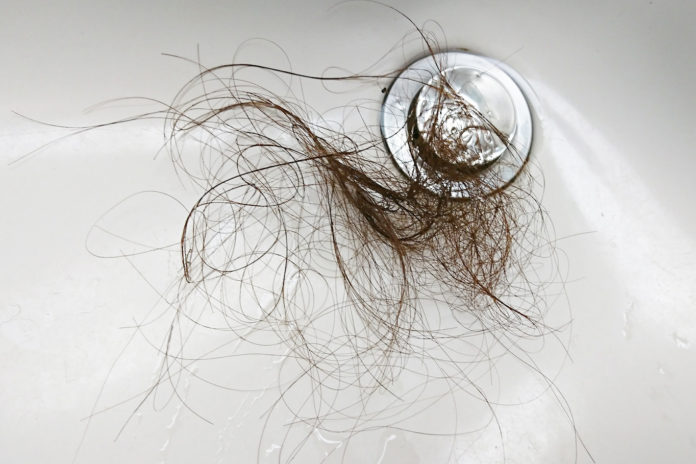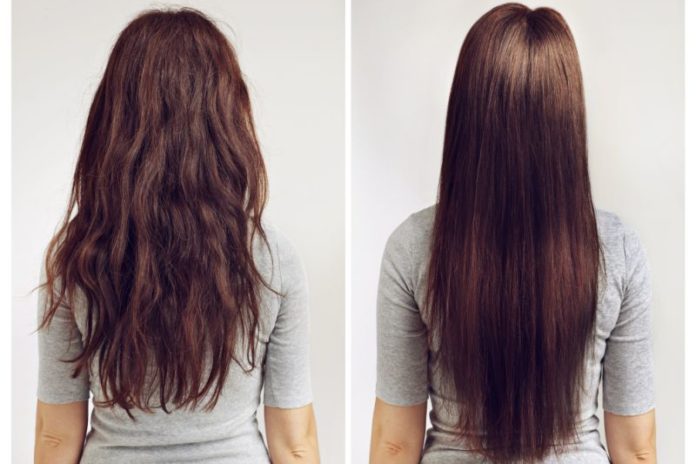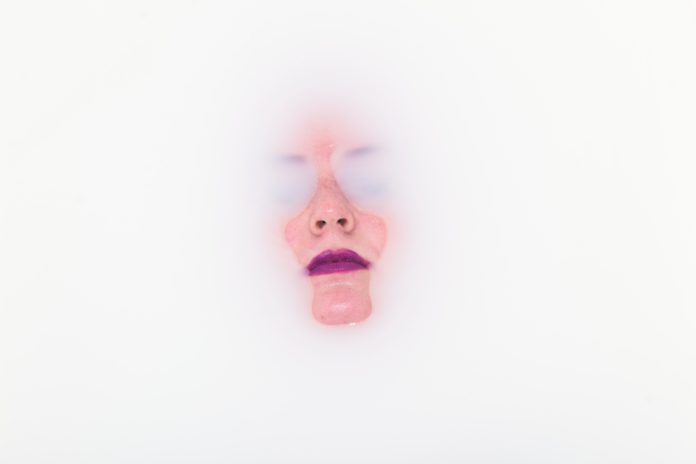Hairdressers are found all over the world. However, there are still few countries in which hairdressers are accorded the social status they deserve.
In Japan, most people have Asian hair, so there is a lack of knowledge of and experience with a more diverse range of hair types and the hair products to use on them. However, because Japan has a tendency to create detailed and fine work, Japanese hairdressers’ skills are far superior to those found elsewhere and are top-class in Asia.

Japanese Hairdressers’ Vigorous Training and Qualification
Both hairdressers and barbers engage in “cutting hair,” the work that, while seemingly similar, is in fact quite different. Barber shops shave the face, but this is not performed at hair salons, and different licenses apply to the respective professions.
The Japanese Cosmetologists Act defines the work of hairdressers as “enhancing the figure through the use of permanent waves, hairdressing, and cosmetics.” Barbers, by contrast, “give order to the figure through the use of haircutting and shaving of the face.” In other words, while hairdressers “enhance” the figure (beautify), barbers “give order” to it (make tidy). Hairdressers can apply permanent waves, but barbers cannot. Hairstyling and kimono dressing is also part of the hairdressers’ range of skills.

In Japan, hairdressers’ licenses and barber licenses are separate national qualifications. Anyone that wants to become a hairdresser or barber must study that given field. To obtain national certification in one of these professions, hairdressers and barbers must graduate from a two or three-year program at a qualified training institute stipulated by the Minister of Health, Labor, and Welfare and pass a national examination.
 National Examination
National Examination
http://sumidabiyo.ac.jp

License of Cosmetology
Continue Training Before Working as a Hairdresser in Japan
After earning the national certification, the newly-graduated hairdressers will firstly have to join a salon, working for 3 to 5 years as shop assistants. In this role, they handle shampoo, cleanup, and basic intake and servicing of customers while training their basic skills. At the shop, after passing various tests on haircutting, hair coloring, perms, and so forth, they are authorized to begin working as a hair stylist formally.
 Assistants have to pass various tests at their salon.
Assistants have to pass various tests at their salon.
In Tokyo, there are over 20,000 hair salons and, in spite of the shrinking population caused by a decline in childbirth, more and more salons are appearing nationwide. Remaining a popular stylist in a competitive market with many hair salons is extremely difficult, but professional and attractive hairdressers who have technique, design sense, and high communication skills will continue to be loved by customers over time.
Japanese Haircutting Techniques
Haircutting as a set of skills was only formalized in Japan in recent years. In the 1960s, Vidal Sassoon in London ushered in the first revolution in hairdressing worldwide, measuring the shape of the head and developing a system of hair cutting logic based on adjusting the volume of hair to achieve the best angles.
A major change to Japanese haircutting skills occurred in the 1970s. At that time, the “Sassoon Cut” arrived in Japan, allowing haircutting to make a major leap forward. Japanese hairdressers active at the time brought the Sassoon Cut back to Japan and researched ways of developing it to the physique of Japanese and their hair type, with its hard, round, and heavy volume of hair. It was through this history of Japanese hairdressers trained in Western cutting techniques that today’s cutting skills were achieved in Japan.
 Japanese hairdressers brought the Sassoon Cut back to Japan.
Japanese hairdressers brought the Sassoon Cut back to Japan.
http://blogs.yahoo.co.jp/hanshirou/47192548.html
As with arts like flower arrangement and tea ceremony, today’s Japanese haircutting systems have different schools of thought. The style of hair cutting influenced by the Vidal Sassoon Cut is the basis of today’s contemporary cutting styles.
 Photos by Jeff Robbins, Flickr
Photos by Jeff Robbins, Flickr
The reason Japanese hairdressers are well-regarded in Asia is because of the Japanese spirit of hospitality and the robust and thorough training system, as well as the early development of a set of skills here based around the hair type and physique of Asians.
History of Hairdressers in Japan
The haircuts seen in Japan today didn’t exist in the olden days. Until the Edo period (1603-1868), most women wore straight black hair, with women of increasingly higher rank vying to have longer hair. Men wore shaved heads with topknots, and women tied up their hair. Given this culture, haircuts were not largely a part of life. Shops where the hair was tied up were referred to as “Hair Tying Shops,” and the stylists at that time were responsible for setting and tying up hair.

Photos by Wikimedia Commons (PD-US)

Various types of topknots were tied according to status, class, and age.
After the Edo shogunate drew to a close and the Meiji Restoration took place about 150 years ago, Western culture rapidly entered Japan under the aegis of the Westernization movement. This led to an order against bobbed topknots and started a major change to Japanese hairstyle. Many people from overseas began visiting Japan at this time, and Japanese were deeply influenced by overseas hairstyles. Today, the topknot is seen only in the context of sumo wrestling, historical plays, and the like.

Inside the barber shop when the order of bobbed hair was issued.
Fifty years after that, in the Taisho period (1912-1926), a hairdresser’s school was opened in Tokyo. This school inherited the traditions of knotted hair while teaching a wide range of aesthetic skills that went beyond hair alone. While Japan had been a culture of tied-up hair for a long period of time, many beauticians’ schools soon emerged, raising the level of technical skill. Around this time, haircuts and permanent waves began to be performed.
Then, in the Showa period (1926-1989), the Japanese Cosmetologists Act was promulgated in Japan as the first set of laws on women’s hair, and this provided the basis for today’s beautician certifications. The law states that “cosmetology is the art of enhancing the figure through the use of permanent waves, hairdressing, and cosmetics.”

It was in the 1950s, about 60 years ago, that today’s Japanese hairstyling techniques emerged. At that time, the mainstream mode was less about cutting hair than about styling (hair setting). It was still a bit later that the basis of today’s haircutting techniques would be developed.

Photo by 昭和ロマン美容室
While Japanese haircutting developed early through the introduction of the Sassoon Cut, hair coloring appeared much later. Not until the 1990s that a trend for colored hair first appeared. Today, with new hair color products and advanced techniques, hair coloring does minimum damage to the hair. We live in an era in which people can enjoy a wide range of hair colors that suit their skin tone, eye color, lifestyle, interests, and individual personalities.
Hair Perm in Ancient Japan
Today, you can have any perm hair style you want in a couple of hours. However, perm technology has an interesting history and struggling efforts for development.
The world’s first perm technology was developed over 100 years ago. An early alternative method for curling hair that was suitable for use on people was invented in 1905 by German hairdresser Karl Nessler.
His method, called the spiral heat method was only useful for long hair. The hair was wrapped in a spiral around rods connected to a machine with an electric heating device. Sodium hydroxide was applied and the hair was heated to 100 °C or more for an extended period of time. The process used heavy hot rollers and took all day to complete.
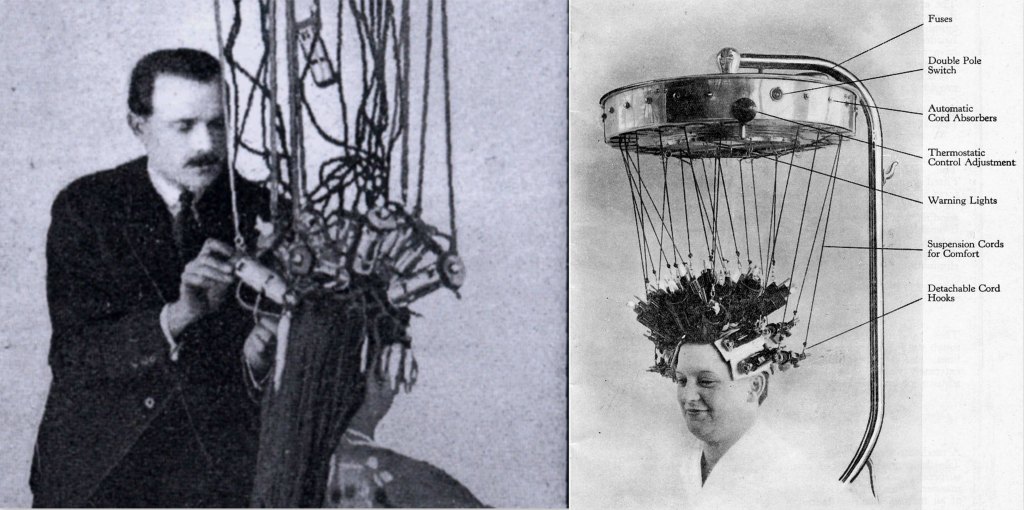
Photos by Wikimedia Commons (PD-US)
Perm technology was such a world revolution because curls stay on your hair even if the hair gets wet. Fitting, because the word ‘perm’ stands for ‘permanent’ wave, and this exact technology reminds us of the ‘digital perm’ used today. This means that they already had digital perm 100 years ago!

The first perm machine in Japan, Yamano Star No.1

Photo by 昭和ロマン美容室
Since the perm technology was not well established at that time, sometimes the customer’s head was burned from overheating or their hair became frizzy and damaged from too much wave. No matter the danger nor disaster in the end results, Japanese women braved it for beauty. They loved elegant and romantic perm styles for the hair trend. We’re grateful that their brave challenge for beauty developed our Japanese beauty culture.
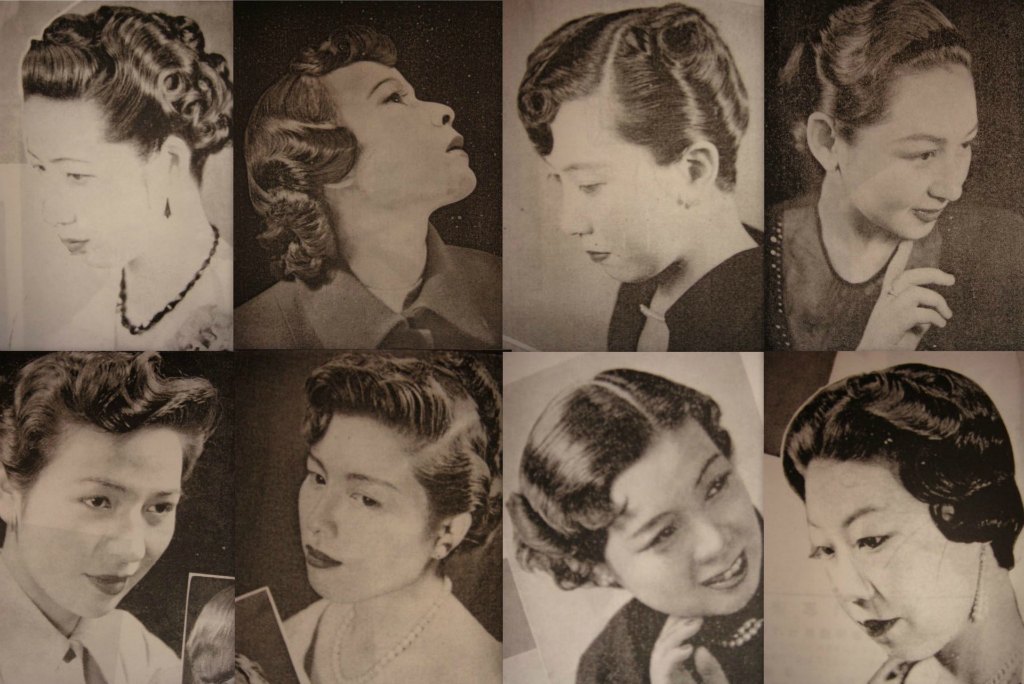 Photo by ロマン美容室
Photo by ロマン美容室
